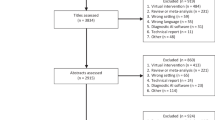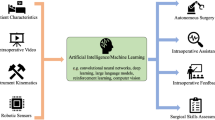Abstract
The benefits and outcomes of robotic surgery are well established in the literature across multiple specialties. The increasing need for and dissemination of this technology associated with high costs, demand adequate planning during its implementation. Therefore, after years of training several robotic surgeons and establishing multiple robotic programs worldwide, the purpose of this article is to focus on the necessary elements in the initial phase of establishing a robotics program. We summarized in our article crucial factors when implementing a robotic program. Therefore, we explained in detail the critical aspects of the program design, implementation, marketing, research and outcomes, and ultimately improving efficiency. The creation of a robotics planning committee composed of several hospital individuals contributes in different lines of work such as cost evaluation, staff training, and OR modifications. A multidisciplinary approach and a robotic lead surgeon are also recommended to guarantee surgical volume and satisfactory outcomes. Furthermore, market analysis should evaluate the competition with other centres and potential surgical candidates in that area. Data collection should also be considered a vital element of the program organization, which assures quality control and helps to diagnose any program deficiency. We believe that the robotic program should be individualized according to the economy and reality of each centre. The success and duration of a robotic surgery program depend on long-term results. Therefore, careful planning with a robotic committee defining the types of procedures to be performed and appropriate multidisciplinary training to avoid surgery cancelations are crucial factors in establishing a successful program.


Similar content being viewed by others
References
Zender J (2010) Developing a successful robotic surgery program in a rural hospital. AORN J 92(1):72–83
Palmer KJ, Patel V (2012) Launching a successful robotic program. In: robotic urologic surgery. Springer-Verlag, Berlin, pp 11–17
Pereira-Arias J (2019) How to build a robotic program. Archivos Españoles de Urologia 72(3):227–238
Rocco B, Patel V (2009) Building a robotic program. Scandinavian J Surg 98:72–75
Luthringer T (2012) Developing a successful robotics program. Curr Opin Urol 22(1):40–46
Mf B (2009) Patient perception of robotic urology. BJU Int J 103:285–286
Johnson EK, Wood D (2010) Converting from open to robotic prostatectomy: key concepts. Urologic Oncol 28:77–80
Intuitive Surgical, "www.intuitive.com,". Available: https://isrg.intuitive.com/static-files/880bf027-e866-4c32-b910-5332467cd8dc. Accessed Sep 2019.
Palmer KJ, Patel V (2008) Launching a successful robotic surgery program. J Endourol 22(4):819–824
Estes J, Stephanie M (2017) Best practices for robotic surgery programs. J Soc Laparoend Surgeons 21(2):1–8
Allona A (2007) Establishment of a robotic program. Archivos españoles de urología 60(4):371–374
Madeb R (2011) Theimpactofroboticsontreatmentof localized prostate cancer and resident education in Rochester, New York. J Endourol 25:573–577
Matsunaga GS, Costello AJ, Skarecky DW, Ahlering TE (2007) Essential elements of building a robotics program. In: Patel VR (ed) Robotic urologic surgery. Springer, London
Thorburn H (2014) Analysis of operating theatre utilisation to drive efficiency and productivity improvements. Stud Health Technol Info 204:163–168
Cima RR (2011) Use of lean and six sigma methodology to improve operating room efficiency in a high-volume tertiary-care academic medical center. J Am Coll Surg 213(1):83–92
Fagin R (2011) Achieving efficiency in the operating room: step by step. In: robotic in genitourinary surgery. Springer-Verlag, London
Argo JL (2009) Elective surgical case cancellation in the Veterans Health Administration system: identifying areas for improvement. Am J Surg 198:600–606
Chiu CH, Lee A (2012) Cancellation of elective operations on the day of intended surgery in a Hong Kong hospital: point prevalence and reasons. Hong Kong Med J 18(1):5–10
Dexter F (2005) Bayesian prediction bounds and comparisons of operating room times even for procedures with few or no historical data. Anesthesiology 103:1259–1267
Dexter F, Macario A (2005) Validity and usefulness of a method to monitor surgical services’ average bias in scheduled case durations. Can J Anesth 52:935–939
Steers W, LeBeau S, Cardella J, Fulmer B (2004) Establishing a robotics program. Urol Clin N Am 31:773
Archer T, Macario A (2006) The drive for operating room efficiency will increase quality of patient care. Curr Opin Anaesthesiol. 19:171–176
Author information
Authors and Affiliations
Corresponding author
Ethics declarations
Conflict of interest
The authors Camilo Giedelman, Marcio Covas Moschovas, Seetharam Bhat, Lauren Brunelle, Gabriel Ogaya-Pinies, Shannon Roof, Cathy Corder, Vipul Patel, Kenneth J. Palmer, have no conflict to disclose related to the production of this article. Dr. Vipul Patel is consultant for Exact Sciences/Genomic Health, Decipher/Genomic DX, Active Surgical, and AVRA.
Additional information
Publisher's Note
Springer Nature remains neutral with regard to jurisdictional claims in published maps and institutional affiliations.
Rights and permissions
About this article
Cite this article
Giedelman, C., Covas Moschovas, M., Bhat, S. et al. Establishing a successful robotic surgery program and improving operating room efficiency: literature review and our experience report. J Robotic Surg 15, 435–442 (2021). https://doi.org/10.1007/s11701-020-01121-3
Received:
Accepted:
Published:
Issue Date:
DOI: https://doi.org/10.1007/s11701-020-01121-3




